Volcan Póas is one of the favorite destinations for foreign tourists.
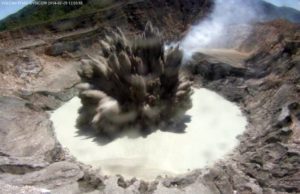
Ecotourism is extremely popular among foreign tourists who visit the vast number of national parks and protected areas that exist throughout the country. Costa Rica was one of the pioneers in ecotourism and is recognized as one of the few international destinations with real ecological tourism options. In the classification of the Competitiveness Index in Travel and Tourism of 2008, Costa Rica reached the 44th place, being the 1st classified among countries of Latin America. The competitive advantages to develop tourism ventures are in the area of human, cultural, and natural resources, in which Costa Rica ranks 24th worldwide and 7th when considering only the natural resources factor.
With revenues of US$ 1,900 million per year, the tourism industry, Costa Rica stands out as the most visited destination in Central America, with a total of 1.9 million foreign tourists in 2007. With 460 visitors per 1,000 inhabitants, the country has one of the highest rates of tourists per capita in the Caribbean area. Most of the foreign visitors come from the United States and Canada (46%), and countries of the European Union (16%), which allows them to receive, on average, approximately US$ 1000 per visitor. It is a value per visitor among the highest from Latin America.
In 2005, tourism contributed with 8.1% of the country’s GDP and represented 13.3% of direct and indirect jobs. Since the beginning of the 2000s, tourism generates more foreign exchange income for the country than the export of bananas or coffee together.
Manuel Antonio National Park
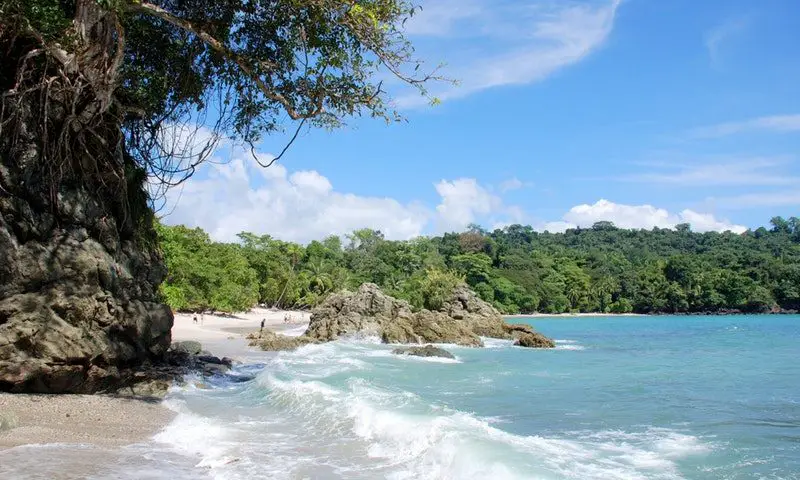
Manuel Antonio National Park is a natural conservation area located on the central Pacific coast of Costa Rica, in the canton of Quepos, province of Punta Arenas. Manuel Antonio was also included by the magazine Forbes, in 2011, among the 12 most beautiful parks in the world
The park is located about 157 kilometers south of the city of San Jose capital of Costa Rica and 7 Kilometers south of the city of Quepos, between Damas and Matapalo. It was established on November 15th, 1972, with an extension of 1,983 hectares on the land part and 55,000 hectares on the marine side. The park is dedicated to conservation, research, and ecological tourism oriented towards environmental education.
History
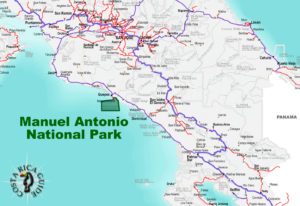
The region where the Manuel Antonio National Park is located was populated by the Quepoa indigenous community, the name that gave origin to the city of Quepos. With the arrival of the settlers, the land became a crop area that was later acquired by the United Fruit Company, until in 1972, under pressure from the Costa Rican people, it was acquired by the State, under its protection and is now administered by the Conservation Area of the Central Pacific (ACOPAC), of the National System of Conservation Areas (SINAC), of the Ministry of Environment, Energy and Telecommunications (MINAET)
Characteristics of the park
This park has one of the most impressive landscapes of Costa Rica and the world, has several inlets with multiple white sand beaches and lush foliage in the middle of large mountains and forests that reach the beaches, is in the forest life zone tropical wet.
It has a great terrestrial and marine biodiversity with wonderful coral reefs.
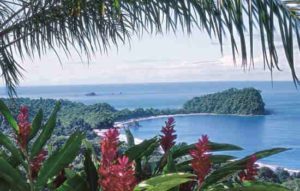
Due to its excellent climate and scenic beauty, Costa Rica is visited by a large number of national and international tourism. Besides, it is currently developing an adequate infrastructure, with emphasis on harmony with nature, quality but mimicked with this to reduce the visual impact and under strict environmental protection standards. Works designed by the renowned bioclimatic architects Ibo Bonilla and Rafael Víquez, among which are the Visitor Center, the Ranger’s House, Viewpoints, and supporting infrastructure to the Master Trail Plan includes trails: Punta Catedral, Cascada, Mirador, Espadilla Beach, Manuel Antonio Beach, Congos, Twin Beaches, Puerto Escondido, Mangrove, and Lazy Path, with universal accessibility facilities, resting areas, panoramic viewpoints, and scientific interpretation.
In the surroundings of the Park abounds all kinds of commerce, with facilities at all levels for tourism including regional and international typical food, as well as accommodation for all tastes and economic conditions.
Flora
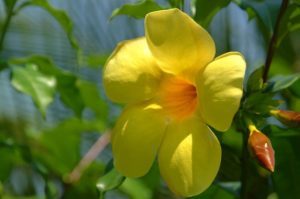
Protects patches of primary forest, secondary forest, mangrove, beach vegetation, marine environments, islands and a lagoon of 14 hectares. The most characteristic flora species within the primary forest are the guácimo colorado, the pylon, the cedar mary, the guapinol black and white tree (in danger of extinction), the surá, the milky tree, among others
The mangrove that covers approximately 18 hectares, is made up of 3 species; red mangrove, white mangrove, and black mangrove. In the vegetation of the beach stands out the Manzanillo tree (that has a milky substance and poisonous fruits), the almond tree, the savanna oak, and the coconut.
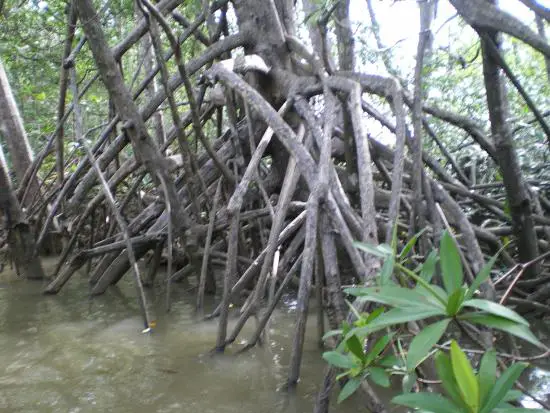
It should be noted that the natural beauties of Costa Rica allow great benefits for tourism. It also allows giving satisfaction to visitors and generating economic benefits for both employers and employees. Of course, all of this will always be regulated by the Costa Rican State.
